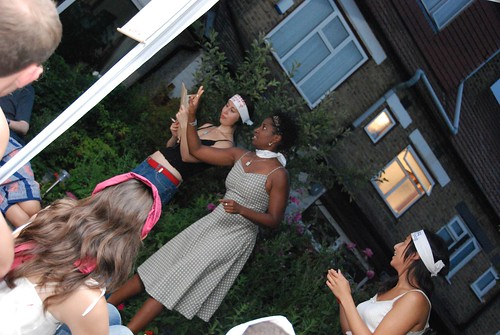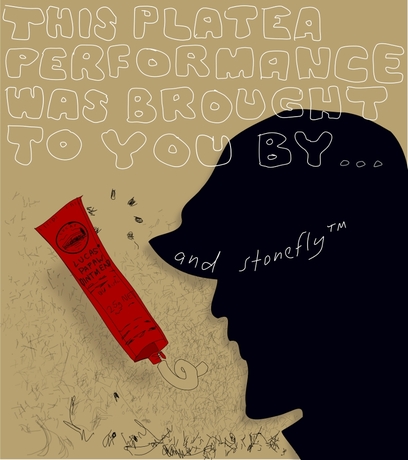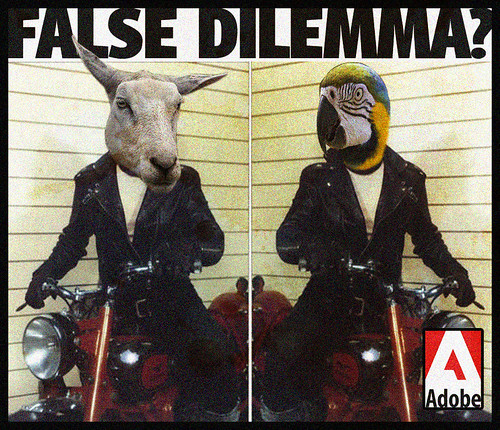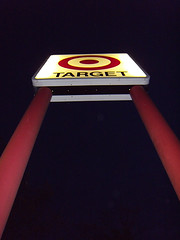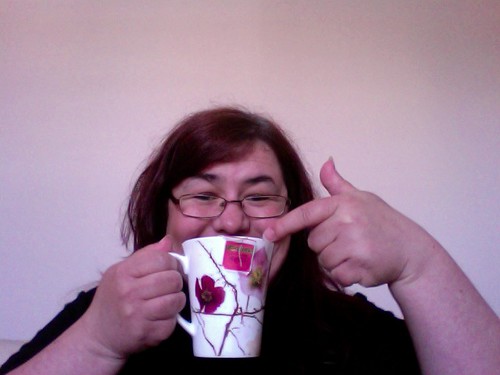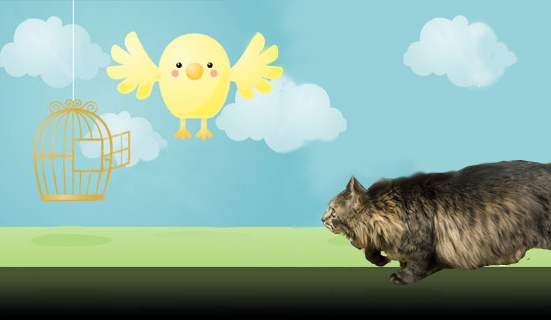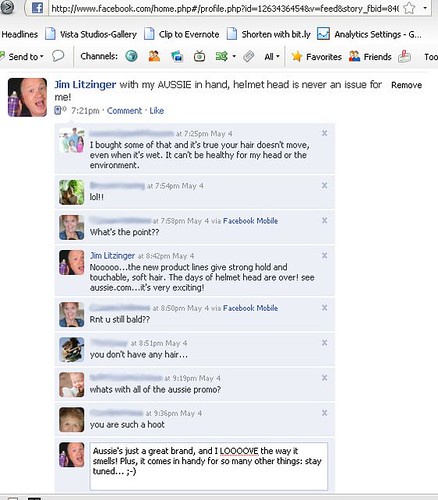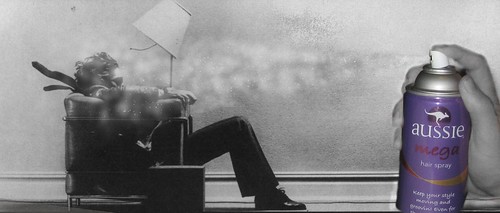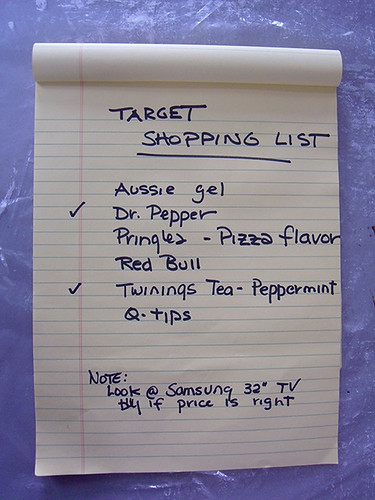I missed out on the end of Co-Modify. Well, sorta. In the midst of a busy week at work and stealing time to participate in Co-Modify, my home state was hit by an anomalous weather event some have dubbed an “inland hurricane.” Hyperbole perhaps, but sustained winds of 90 mph in a storm that lasted more than 20 minutes? Goodbye power and clean water, goodbye thousands of trees, goodbye graphics pad and internet connection. Well, except I have this new gadget, an iPhone, and where there were enough bars, there was some limited access to the internet and the art that happens there.
iPhone notwithstanding, the storm was an important reminder. As my community collectively celebrated the power companies (Ameren Cips, Egyptian Electric, etc.) and their valiant efforts to get the lights back on over a six county area, I wondered if I needed to change sponsors. As my media-saturated reality was reduced to one radio station sacrificing its commercially generated playlist for call-ins, press conferences, and updates, I found myself thinking about the network of people it represents – people helping people, people arguing with people, people being people. The event gave ample evidence of human frailty and foibles, egocentrism and brutality – but also the human capacity to pull together, to be patient, to help one another.

And all of that digital stuff, including all the angst over consumerism and corporate sponsorship, seemed to take on a different heft as its ephemerality became phenomenologically manifest. If you hear in that a dismissal of the Interweb and its amusements, listen closer. By week’s end, I jonesed for less restricted access to all those pixels and posts, an admission that suggests the need for self-assessment and a recovery program. But then, I felt the same way about fresh water from the tap, clean clothes, fresh food easily stored, and ready-to-hand light at night. Is all that computer interconnectivity a distraction or a daily staple?
These were the sorts of conundrums I thought Co-Modify already explored, although mostly without the “benefit” of downed trees and flood waters. What are the potentials of these virtual spaces for interconnectivity, collaborative art, “crowdsourcing”? In what ways is it unavoidably a site of commercial proliferation and corporate manipulation? In what ways is posturing at either end of this spectrum of possibilities rife with contradiction and hypocrisy? Can my art about commodities made with commodities really be a valid criticism of consumerism and commodity culture? Is the only way out of this conundrum to abandon critical reflection for a celebration of my favorite product(s)? And this @Platea stuff on the internet…is it even really art in the first place?
Why Call it a Performance?
Several @Platea folks refer to Co-Modify as a performance. I don’t challenge this claim in the least, but I think it is worth exploring a little. Is it a performance because, in the massive flow of data that is the Internet, such an event is ultimately ephemeral in the way of a “happening”? Or has the capacity of the medium to copy and reproduce such information almost endlessly added a new nuance to Richard Schechner’s definition of performance as “twice behaved behavior”? Silly questions – say “yes” to both. But I think there is even more to the performance designation to consider.

My own training in performance is varied and dubiously professional. At times I call myself a scholar of Performance Studies, a shambling inter-discipline that claims many mothers. My own route to this practice comes at least partly through the academic discipline of Communication Studies (formerly Speech Communication). In Performance Studies’ celebrated origins in Theatre, Anthropology, and the performative turn in Visual Arts (among several others), the strand of communicative practice in Oral Interpretation often gets lost. It is an important one, though. Old school Oral Interpretation celebrated the virtues of reading, ultimately performing, Literature aloud. In the 80s, with the cultural turn in the humanities and social sciences underway, “Literature” became a troubled concept. And yet rather than bewail the decline of the Canon, many Oral Interpretation practitioners and scholars embraced the power of performance to investigate more than just culturally revered texts. Enter everyday life performance, enter performance ethnography, enter performance and popular culture, enter performance art (well, re-enter), enter digital performance, and enter so many more delicious applications of performance to a variety of phenomena.
From this perspective, performance takes a variety of functions. It is, at its most basic level of speech act, a “doing.” It is celebrated by many as an embodiment. It is also a communicative sharing that happens between performers and audiences. It is a way of doing culture – and, importantly, a way of intervening in and troubling problematic cultural practices. But most intriguingly to me, it is a mode of inquiry and analysis. The old Oral Interpretation credo was that if you truly wanted to understand a text, try performing it. The potential for performance as a mode of engaging the world, of investigating phenomena has ever been the most exciting part of the rigorous study of performance. To me, anyway.
And so the kind and creative folks at @Platea offered a challenge. Investigate corporate sponsorship in on-line social networking sites by means of a week-long performance. I shared some of my friends’ concerns about what this might mean, but trusted that the enactment would, itself, yield insights and discoveries. I am already phenomenologically aware of social networking services like Facebook and Twitter as sites of digital performance, but I have yet to see (or especially participate in) a serious exploration of it that announces itself as such. @Platea’s Co-Modify project seemed to fit the bill nicely.
But is it Art?
As I experienced the Co-Modify project and have read the debriefing posts so far, I am struck by how often the ontological status of “art” in this corporate sponsorship game was challenged by some. At its most basic articulation, this critique posits that mentioning a product or mega-corporation in a tweet or a status update hardly qualifies as art. When not challenging its status as art, some wondered if the true work of an artist should be shilling, especially uncritically, for mega-corporations. The difference between these two positions is one of degree more than kind, I think.

At the heart of this concern is a rather romanticized notion of “art.” Art challenges the dominant power structure; art is at its purest when it is not commercial; art follows agendas of inspiration rather than selling products; etc. Or perhaps, more accurately, artists compromise their integrity and dirty their work when they get into bed with big business. That’s giving up being a visionary and selling your soul to the “art” department of some advertising agency. Better to be pure and starving than support the art-suppressing, art-killing corporate masses of the status quo. Dude!
Okay, I mock. And I shouldn’t. Some of those romantic notions of the rebel artist are near and dear to my own practice. But the fact remains: all of the participants in Co-Modify and, I submit, most of our audiences on our various digital outlets live in consumerist cultures. Jennifer Ng pointed this out so clearly in a comment to one of my Adobe Facebook notes: “The importance of the act, imho, does not lie in resisting commercialism since admittedly it’s a part of our lives.” If it is artists’ work to aesthetically examine the features of their lived experience, the elements of their landscape (even if digital), wouldn’t it be a disservice to the vision if they blotted out so much of it? If they ignored the ad banners, the always already corporate sponsored venues of their art?
Perhaps nothing points to the ontological status of the Co-Modify project as art more than that some folks blocked the performers, that some stopped following their work. And what does it tell us about this particular zeitgeist that perhaps the most (well...) avant garde, rebellious artistic act these days is not to set fire to the corporate structure but to embrace it, to take on the tainted relationship of sponsor as locus of aesthetic production? Might that make you as uncomfortable as, say, an artist crucifying himself with a shotgun on the hood of a Volkswagen? Or, well, should it?
The Ties that Double Bind
In one of my Adobe Facebook notes I mentioned my partner, Craig’s, work with an essay by Kristen Langelier and Eric Peterson that articulates the significance of the creative double bind. Briefly put, the claim here is that the double bind (I sometimes use “paradox” or “conundrum”) energizes and makes art go. Read into this, if you want, the aesthetic celebration of indeterminacy or resistance to art that is too overtly didactic. Now, I am not proposing the double bind as a grand theory of art – that all art (or worse, all “good” art) occurs as the result of a double bind. Rather, double binds are exceptionally productive for aesthetic practice.
Some of the most intriguing double binds to me are the multiple bindings of connection that occur in collaboration. My partner and I have just experienced this as we co-directed a group performance for the first time – our biggest collaboration to date. The experience was a good one and one that we would do again, but not without its frustrations and compromises. At the time, I saw these compromises as limitations, as failures to produce a clear and shared vision. Lately, though, I have wondered if those disagreements and their uncertain resolutions in the exigency of the moment weren’t profoundly productive for our shared vision.

Or take my artistic friends and fellow Co-Modify performers, Mary Mercury (Alison Fisher) and Glenda Greenhouse (Janet Donoghue), “The Composters," sponsored by Miracle Gro. These two performers have a perfect combination of performance chemistry and messages that matter. However, as they delve comically into issues of environmental sustainability, unfinished projects of feminism, and economic conundrums of consumerism, they do so in a way that both calls for social change and acknowledges the challenges of such with self-deprecating reflection (and humor!). Their process in producing these performances is not always fun and games. They argue, they disagree, they challenge each other. I fully believe that the nuanced and hilarious work they produce depends on the dialectic tensions of their aesthetic collaboration.

One last example: I came to the Co-Modify project in part as a poacher. I am part of a local project started by several graduate students in our department. “BAR Corporation” is an attempt to foster opportunity for art (particularly performance art) across the Carbondale community. “BAR” stands for “Bureau of Artistic Resources,” and the collective parodies corporate structures as a means of developing community artistic collaboration, transforming bureaucracy into radical democracy. Or, well, that’s the idea, anyway. In practice, however, we often discover the need for hierarchical structure, the call for individuals to be leaders (CEOs) and make decisions, the challenges of the allocation of limited resources, the tendency of audiences to focus their praise or blame on specific individuals in a collective, etc. It is, in practice, a collaborative performance experiment that continuously reveals that the opposite of corporate culture (whatever that is!) is rife with its own challenges and problems. Has this resulted in a throwing up of our hands and giving up? Far from it. If anything, it has lead to productive compromises and the continued production of art. Moreover, it has led to an entity that demonstrates the nonsummativity of a system, its whole being so much more than the sum of its parts.
So I say my participation in Co-Modify was a poaching for BAR Corp because I was looking for ideas. In part, I hope it is evident that there are thematic connections between the two projects. BAR Corp has also expressed interest (particularly as its members begin to disperse away from Carbondale) in investigating the internet and social networking as loci for future projects. In this way, one collaborative collective (BAR Corp) might network its networks with another (@Platea), and so make an even bigger net. Along the way, I discovered that these issues of collaboration that have been so recently emergent in my work with my partner, The Composters’ work, or the work of BAR Corp played out in interesting ways for @Platea and the Co-Modify project. The artist network meets the social network and benefits as much from the chafe as the fit.
Caught in the Net
So much of the audience demand for a work of art, collaborative or otherwise, is a demand to know its “aboutness.” What is it about? What are you trying to accomplish with this? I don’t want to deny the importance of telos or even the benefits of a good prompt. But I think the intersection of virtual interconnectivity with collaborative art projects places a heightened emphasis on conversation – more importantly, on-going conversation.
The art is literally about the conversation it makes happen. The Co-Modify project, to me, became most interesting when the performers started responding to one another. I also enjoyed fielding questions from non-participants about what I was up to with Adobe and who the heck was @Platea. I don’t think I lost any “followers,” but someone sent me information for applying for a Warhol Grant. And then there were the encouraging comments from one of my partner’s former boyfriends – much appreciated, but a little strange. (But that’s a whole other aspect of, um, networking!)
What I see projects like Co-Modify doing is making more explicit a shift in our understanding of the “work of art.” That is, the “work” is less importantly an item (or even a commodity) than a process, a dialogue, a series of shifting allegiances and connections, a “working” of art, an endless performance. I walked the Roman avenue of @Platea until a mighty wind blocked my way with fallen trees. And even so stymied, I saw a net working.
Why look! It still is.

Jonny Gray (a.k.a. Bungy32) is an associate professor of communication studies at Southern Illinois University Carbondale. He specializes in cultural studies and environmental communication and teaches classes in "Environmental Rhetoric," "Performing Nature," and "Visual Rhetoric" (among others). He is also an active director and performer with a current traveling solo show, "Trail Mix: A Sojourn on the Muddy Divide between Nature and Culture." His published work has appeared in The Drama Review, Text and Performance Quarterly, Call to Earth, and Environmental Communication: A Journal of Nature and Culture.
